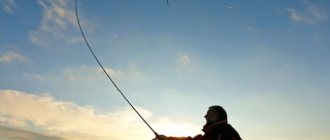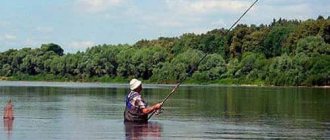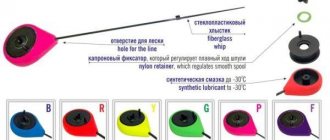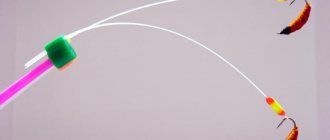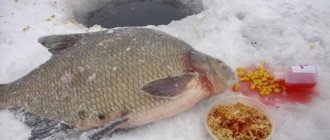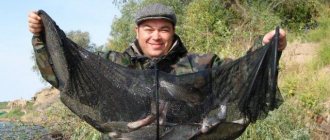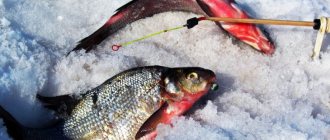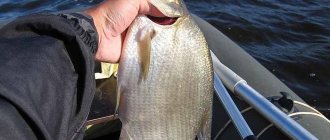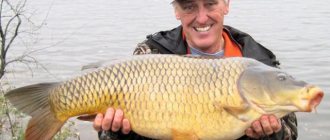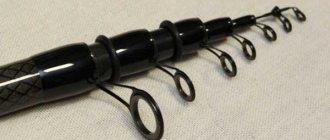Where and how to look for bream in winter
Bream begins to change their camp sites in the fall, moving from shallow to deep water. He prefers to wait out the winter in areas of the reservoir with uneven bottom topography, near changes in depth, where there is enough food and oxygen. You can find bream in winter in places where:
- There are underwater keys;
- A flooded riverbed passes;
- Tributaries flow in.
Areas with algae that have gone down since the fall should not be considered as promising places . Vegetation under the ice cover begins to decompose, emit an unpleasant odor, and absorb oxygen in the water. The fish avoids such places.
Where to look
The level of activity of bream depends on the degree of oxygen saturation at a particular fishing point, as follows:
- On the first ice , when fish often come out to feed, it is effective to organize fishing at a depth of 2-3 m .
- In the middle of winter, bream already shows less interest in baits, it becomes inactive, and concentrates mainly at a depth of 4 m. In such places there is the most oxygen. The fish overwinter in the pits and feed on the elevations that border them. The bites at this time are sporadic and weak; you should not expect a rich catch.
- Complete calm is observed in the middle of nowhere, as the bream falls into torpor. This is especially true for standing reservoirs, where the oxygen regime is much worse than on rivers. The bream becomes active only when there is melt water - on the last ice.
- If fishing takes place on a reservoir , then pay special attention to the edges and places where the steep descent ends.
- Also, when fishing for bream in reservoirs , it will be good if a small river or at least some tributary flows into the reservoir itself. Bream likes to take positions near such tributaries (picture below).

For information! It is recommended to look for bream in winter in places with a muddy or clayey bottom, avoiding holes filled with snags.
The behavior of bream is directly influenced by weather conditions . With sudden changes in atmospheric pressure, fish are inactive. It is advisable to go hunting for prey at night; the intensity of the bite is most often observed within 2-3 hours after sunrise , and several hours before dusk .
Bream maintain a schooling lifestyle even in winter, going out in search of food. The number of one flock can reach over one hundred individuals.
Equipment for fishing on the current
Loading …
In places with a certain speed of water movement, a fishing rod of the same type is used, regardless of the conditions. In general, winter rigging for bream is similar to a float fishing rod, but there are also fundamental differences:
- extended whip – 25-30 cm;
- bright and soft nod;
- increased fishing line thickness - 0.16-0.18 mm;
- There is a weight attached to the handle that prevents it from tipping over.
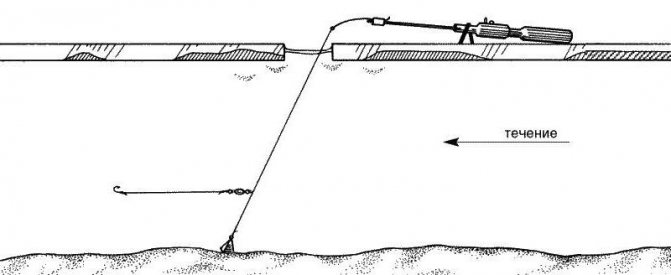
The equipment is quite varied and is based on the fishing method:
- On the winter feeder, a Gardner loop or paternoster is used.
- Inline equipment is hung on the skating rink.
- In pulling up, a paternoster or a helicopter is used - it depends on the depth of the wiring.
Catching bream on a rocker
The bottom rig with a rocker is highly effective on bream. It is relevant not only in winter, but throughout the entire season.
What is
The equipment received its name due to its similarity with an arched wooden device - a rocker.
This method involves the use of two hooks, spaced apart at a certain distance. This placement of the bait eliminates the possibility of tangling and overlapping of the leashes with each other. loaded in the center of the rocker arm itself. For fishing in still water, a sinker of 2-3 grams . When fishing in the current, depending on the strength, from 10 grams . Hooks are used for bream and whitebait in sizes 10-12 .
This type of bottom equipment has its advantages :
- Possibility of catching bream in heavily silted areas of the reservoir.
- The tackle is unnoticeable to the eyes of the fish, the leashes are not pulled, and the prey does not feel resistance at the time of the bite.
- Thanks to two hooks, you can quickly decide on a catchable bait option.
- The bait always remains in the bream's field of vision.
- Ideal for catching large specimens that have a heightened sense of danger.
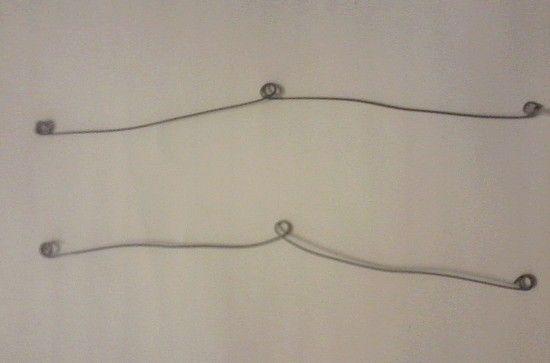
A simplified version of a do-it-yourself rocker arm

Tackle storage option
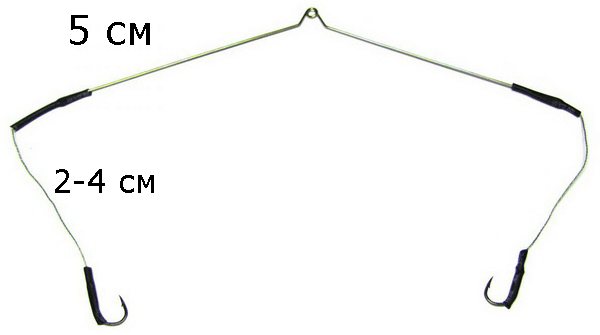
Leashes can be as small as 1 cm, but we recommend starting with two. There are several variations of the rocker , they differ in the material of manufacture:
- With sliding leashes . This bottom rig is positioned as the most sensitive, its leads are tied to the main thread through the end and central rings. When swallowing the bait, the bream does not feel any resistance and confidently pulls out the line. The bite signal is the float sinking and the nod bending towards the bottom.
- Blind equipment . The leashes are installed directly to the outer rings. When the bream begins to swallow the bait, one arm of the rig rises and the nod extends. A float placed on the surface of the water can also indicate a bite. Here it is very important to make the hook in a timely manner, otherwise the fish, feeling some resistance, may leave.
The success of ice fishing with a rocker depends on the correct manufacture of equipment and adherence to certain fishing techniques.
Video on how to make a rocker with your own hands
Fishing process
Hunting for bream in winter using a rocker is carried out at a depth of 7-15 m . First of all, they check channel dumps, holes, and coastal edges. The holes are drilled with a drill with a blade diameter of 200 mm . In order to avoid setting the bottom equipment by surprise when fishing, the fishing line should be kept closer to the edge when lifting the prey.
Catching bream on a yoke consists of the following steps:
- The bait is thrown into the drilled hole in half an hour using a feeder - a dump truck. It should deliver the mixture to the very bottom. In the absence of a current, it is enough to make a feed from several lumps of bait mixture thrown into the hole without a special device.
- Having put two types of bait on the hooks, make the first cast into the hole. Using the selection method, you will be able to determine the most advantageous bait option and settle on it.
- A straightened nod will indicate that the fish is trying the proposed bait; the hook is made when the arm of the bottom rig is lowered.
During the fishing process, it is recommended to use a hook.
Catching bream on a rocker, watch video
Setting up a winter float rod for bream
To set up the equipment of a winter float rod for catching bream, I first select the carrying capacity of the float, taking into account the fishing depth. Then I place the sinker and lastly select the weight in the water of the rest of the weight of the float tackle.
Towards the middle of the winter season, bream can be found in the deepest parts of reservoirs. Then, to quickly deliver the bait to the bottom, you will need a slightly different setting of the winter float fishing rod for catching bream using two floats in the equipment.
Details of setting up such tackle can be read in the article Winter fishing rod for bream with two floats.
Bream on a jig
Catching bream from ice using different types of jigs increases the chances of catching even in the dead of winter. Thanks to the prostate and the effectiveness of the tackle, even a novice bream fisherman will be able to catch the coveted trophy. Also, jig fishing is ideal for fishing in a tent.
How to make tackle
To complete the jig tackle for bream you will need:
- Compact and lightweight fishing rod . The length of a durable form is 30-50 cm , it should be equipped with several passage rings, an easy-to-use handle and a spool mount.
- Medium-hard nod 15-25 cm long . A do-it-yourself watch spring nod is suitable for these purposes. The rigidity of such a spring is quite enough for timely signaling of a bite and self-hooking of bream.
- Fishing line reel . Any model will do, the main thing is that it is a reliable option.
- Monofilament thread with a cross-section of 0.1-0.17 mm . Length within 20 m . When catching a large specimen, it is recommended to choose a line that can withstand 1-1.5 kg at break . Excessively thick monofilament will only scare away cautious prey.
- Heavy tungsten jig . Considering that fishing is carried out at a fairly large depth, an actively moving bait must have serious mass in order to quickly reach a specific depth. When using bulk baits, special attention should be paid to the size of the hooks; they should freely accommodate up to 10 pieces of large bloodworms.
For information! Among the catchable models for winter bream are: uralka, reverse uralka, droplet and oatmeal. They are used together with bait. Thanks to a successful form and proper play, even the most passive prey can attract attention.
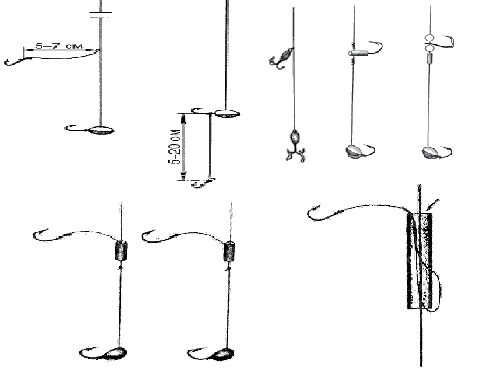
To catch bream in winter using a jig, you need to know the main points of the fishing process.
Fishing technique
The use of jig tackle involves an active search for bream. Having decided on a promising location, start feeding the holes. After which, perform a cycle of movements:
- slowly lower the jig to the bottom;
- tap several times on the bottom surface;
- raise the bait with a smooth sway of the nod.
- movements are made approximately 2-3 times per 1 second.
The signal to hook will be a straight nod on the fishing rod. It is better to use jig tackle in stagnant bodies of water and with weak currents. If ice fishing is planned on a river with a strong current, then it is more advisable to use winter feeder gear.
Video on catching bream with a jig:
Setting up a winter fishing rod for bream
At the first stage of setting up a winter nod fishing rod for bream, we select the diameter of the fishing line that can withstand the maximum weight of the bream biting on a jig in the reservoir you are visiting.
At the second stage of setting up the equipment, we select a jig whose WEIGHT IN WATER is capable of sufficiently tensioning the fishing line at the depth of winter bream fishing. On this occasion, you can read the material in the article Setting the nod of a winter fishing rod
Next, for the selected weight of the jig in the water, we select a nod with a spring of appropriate sensitivity to the careful bite of bream. We mount all the selected equipment elements on the winter fishing rod.
At the final stage of adjustment, we lower the jig selected for winter bream fishing into the water, as a result of which the nod spring will receive some bending angle. All we have to do is compensate for this bend by adjusting the nod shock absorber spring.
On the float
Loading a winter float (click to enlarge)
To catch capricious and cautious bream in the winter, you need to prepare a special float equipment, and not a regular float. It is noteworthy that fishing with a float will have results in any frost and in any wind.
The main thing is to clearly adjust the sinker-float system. The ideal option is when the total weight of the sinker and hook slightly exceeds the carrying capacity of the float. In this case, it is very important that the float sinks very slowly, allowing the bait to reach the very bottom.
Gear device
To make highly effective tackle for winter bream, use:
- a fishing rod of the “balalaika” , “filly” type with a standard whip and a cork handle;
- open coil;
- monofilament with a diameter of 0.14-0.16 mm (the color does not really matter, a dark thread will be easier to see in the snow);
- hooks made of thin wire of 10-12 sizes, and an elongated fore-end (a sandwich made of bait will have a more attractive appearance and the quality of hooking will be an order of magnitude higher);
- a classic float, the carrying capacity of which directly depends on the specific fishing conditions (when fishing at a depth of 7-8 m, it is enough to take models with a weight of 2-3 g );
- a sinker of one or more pellets, depending on the strength of the current.
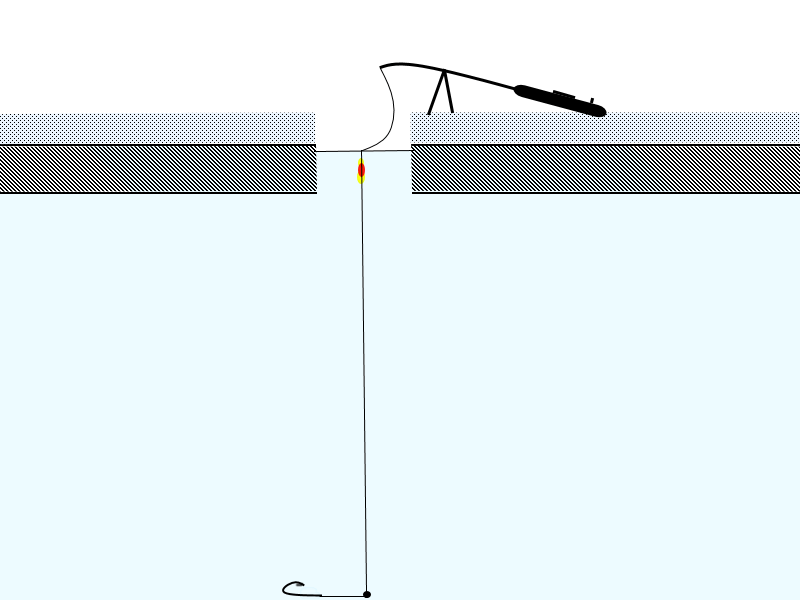
For ease of fishing, the fishing rod is placed on a stand, which can be made of snow, or plastic, metal, or any available material. If you hold the float tackle in your hands all the time, the fish will feel the vibrations and, most likely, will leave. If there have been no bites for a long time, then you can attract the attention of the bream by playing with the tackle.
How to catch bream in winter using a float
The process of catching bream in winter using float tackle involves the following steps:
- preparing two holes at a distance of 60-70 cm from each other;
- delivery of the bait mixture to the fishing point using a feeder-dump truck;
- casting baited tackle and waiting for a bite.
The moment of hooking will be indicated by a float plunging into the water or floating to the surface. You also need to monitor the movement of the nod. You should hook the bream confidently, without leaving it a chance to escape. During the fishing process, the line is held between the index finger and thumb of the right hand. If there are no bites for a long time, then it is necessary to supplement with food bloodworms or balls of bait mixture.
Sensitive tackle for bream in winter
High sensitivity gear is equipped with:
- float (2-3 floats);
- special sinker;
- mobile limiter;
- hook;
- leash, the length of which determines the degree of sensitivity of the instrument.
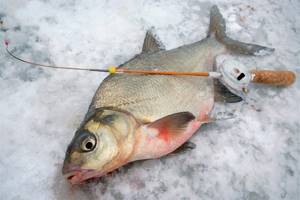
It is recommended to use ultra-sensitive tackle on reservoirs with calm water, since it is a passive instrument. If you use a nod with a large bend angle, you can significantly expand its capabilities. You should not use a jig instead of a sinker.
Other gear (harvester, helicopter)
In addition to the basic gear, there are unpopular, but also have their place, and quite effective gear for catching bream in winter - a helicopter, a combine, and other hybrid feeder gear.
Tackle helicopter
The essence of the gear is that the maximum distance can be fished from one hole. The design of the helicopter allows theoretically to place any number of hooks with leashes and baits. The tackle is used both in strong and weak currents. What does a helicopter look like:
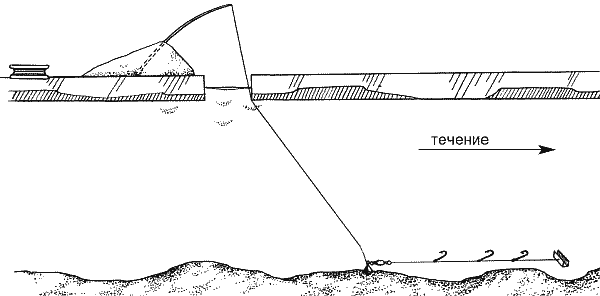
What we have:
- Main line;
- Leashes with hooks;
- A tin (often) helicopter shape;
- Sinkers;
- Swivels and other connections and locking elements.
The helicopter forces the tackle to straighten, adapting to the current, placing the fishing line with leads in a straight line. To do this, you need to make the cutting (made mainly from coffee or drink cans) correctly (video below).
How to make a helicopter with your own hands, video:
The process of catching bream on a helicopter:
Harvester tackle (winter donka) for bream
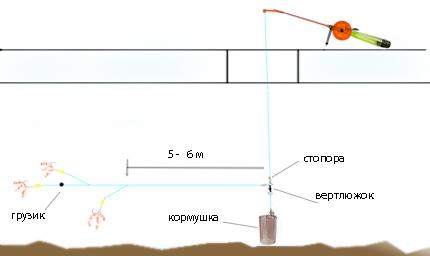
Used as a winter donka. Suitable for catching bream in particularly cold times. Do not use a combine harvester for fishing in reservoirs. This tackle is exclusively for the current.
A long piece of fishing line from the feeder (5-6 meters), a feeder, swivels with stop beads and several leashes with hooks and a jig, loading.
- The main line is taken with a thickness of 0.30-0.35. 20-30 are wound on a reel .
- The feeder is made of transparent plastic (baby food or a container for giving tests), the load is up to 100 grams. Usually lead is simply poured onto the lid of the feeder.
- Leashes 7-12 centimeters.
- The leashes are located one meter apart.
- Hooks 10-12 sizes.
- Bite alarm (a bright ball attached to a spring with a fishing line that will move when bitten).
To fish places in search of bream, you need to make about 5-7 combines. To fish, you must have at least 3 in stock.
Bite alarm: installation on a fishing rod
Lures.
The following are placed in the feeder:
- small crustaceans;
- insects;
- bloodworm;
- maggot (if any).
How to assemble harvester tackle step by step:
Fishing with a combine (winter donka):
Rocker
One of the equipment options for a nodding or float fishing rod is the recently popular rocker arm. It is designed to help anglers in fishing on heavily silted bottoms; in addition, the lightness of the equipment does not bother cautious bream.

Such equipment is made in two ways:
- from a tube;
- made of wire.
The main idea of the gear is a double leash, which moves inside a tube or through wire rings; when biting, the bream takes the bait, but does not feel resistance, since the leash slides and gives a certain degree of freedom.
Tips for catching bream in winter
Fishing for bream in winter on the current has its differences, both tactically and technically. This is explained by both the conditions of the reservoir and the behavior of the fish in it. For fishing in the current, you will need special gear that can hold the bait at the fishing point. To always stay with your catch, you must adhere to the following recommendations:
- Consider a narrow row of shoals, slopes, areas with reverse flow, and areas with uneven bottom topography as promising fishing sites. It is also worth examining depth differences transverse to the current and the edges of the riverbed.
- For successful ice hunting for bream, you should choose weighted versions of fishing rods and donks. Winter tackle should keep the bait under the hole, but not let it run along the bottom. When fishing in small and medium currents, a float is suitable, and in a strong current, a nodding rod equipped with a sliding sinker, a limiter and a leash is suitable. The main thing is that the nod does not bend completely, otherwise the bite may not be seen. If the hunt is for white bream, then fluorocarbon line with a cross-section of 0.1-0.12 mm is used, and for catching large individuals, a thread with a diameter of 0.12-0.25 mm is used.
- The bait mixture is delivered during the current either using a feeder on the tackle itself, or by using special devices that are lowered into separate holes located upstream. The best option for feeding capricious bream is live bloodworms.
- to attach the bait in a bunch, while one or two pieces can be kneaded to enhance the smell.
- You shouldn’t create unnecessary fuss over the hole Maintaining silence in the fishing area increases the chances of catching the desired trophy.
- As a safety net, it is recommended to set up and feed a spare hole. Often, after the bream digs the bottom above the working hole, it leaves in search of a new place rich in food.
- The first to come to the bait are the breams, and only then the large individuals.
- When catching bream at night, it is more advisable to use hooks with drops of phosphorus varnish or light-accumulating jig models.
- Considering the finicky nature of bream in winter, there should be several bait options in your arsenal.
Catching winter bream is not an easy task, but it is quite possible. The main thing is to know its behavioral characteristics during this period, and competently approach the choice of gear and bait.
DIY winter float for bream
In order not to waste money, the float for the fishing rod is made from scrap materials:
- The base will be a piece of rectangular polystyrene foam 7-10 cm long.
- Using a sharp knife, the fragment is ground to a cone shape.
- Burrs and other irregularities are smoothed out with a file or fine-grained sandpaper.
- A wire with a ring is inserted into the sharp part of the cone. Glue is used for fixation.
- Next, the foam is painted with bright paint.
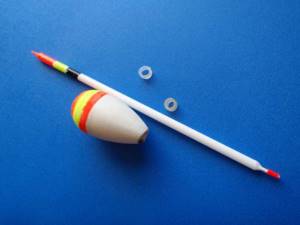
What to feed
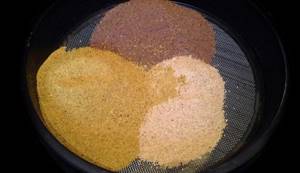
There have been, are and will be a lot of opinions and discussions about bait. It’s not for nothing that they say how many people have so many opinions. Some fishermen argue that winter bait should contain a minimum of aromas. Others (there are fewer of them), on the contrary, believe that odors in cold water should be more powerful. The amount of food should not be too large, otherwise there is a risk of simply overfeeding the bream.
When the depth exceeds four meters, a feeder will help deliver complementary food. If there is 2-4 meters under the ice, you can simply lower the diluted bait into the hole. An exception may be when catching bream in the winter on the current, if the current is noticeable, complementary food is served only with a feeder.
Recommended reading: Baikal grayling
Some fishermen purposefully add small, feeding bloodworms to the bait. How this affects the fish’s appetite is again anyone’s guess. On certain days it can really help, and sometimes it can actually hurt.
My personal opinion is that groundbait is not so much food as it is an appetite enhancer. A kind of spice that, when added, would make you want to eat more. After all, smells affect a person’s appetite, so why shouldn’t they also affect fish? But the composition of winter food should not be made nutritious, after all, this is not summer. It is believed that bream is partial to the smells of coriander, cinnamon, hemp, and sunflower seeds. You can experiment with them. It is especially good if fishing takes place frequently and in the same body of water.
The main secret of good tackle
It should be remembered that not a single fishing rod, even the best, will give the desired effect if it is poorly balanced. Bream belongs to the carp family. It draws food into its mouth along with water, so, feeling an incomprehensible heaviness, it can easily get rid of the bait by simply spitting it out. That is why it is so important to maintain a balance between the float and the sinker, so that when the bite alarm is immersed in the water, the prey does not feel or suspect anything. This is the main thing!
It makes more sense to adjust the float tackle in advance, in the warmth and comfort of your home, before going fishing. Immerse the end of the fishing line with the hook and float in some tall container of water. This is much more convenient than changing the weight of pellets in the cold. Better yet, prepare several gears and use them depending on the situation.
See also:
— Winter fishing for bream — Fishing calendar — How to salt bream at home
Types of fishing rods and their equipment
Experienced winter fishermen have in their arsenal several types of gear for fishing for bream. This thorough approach allows them to remain fully armed on any body of water.
Float rod
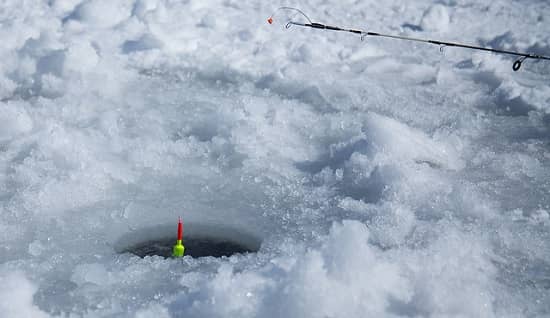
A winter float rod is the most common tackle for catching bream from ice. Its popularity is due to its high efficiency and ease of installation. It includes the following elements:
• fishing rod “filly”; • monofilament line 0.15 mm thick; • float with a carrying capacity of about 2 g; • set of loads; • hook No. 16–10.
For an under-ice float, a fishing rod called a “filly” is perfect. Compared to other designs, it has a number of undeniable advantages:
• low price; • ease of use in cold weather; • increased reliability.
In addition, the “filly” has minimal weight, which allows you to take a large number of different rigs with you when fishing. The float rig does not use leashes, which significantly increases its strength characteristics. During the fishing process, the piece of fishing line between the hook and the sinker always lies on the bottom, so the large diameter of the monofilament does not alarm the fish. The float should be made of rigid foam and have a minimum number of additional parts.
Such products are very strong, durable and easy to clean from ice. This element is attached to the fishing line using a silicone cambric. Particular attention should be paid to loading the bite alarm. When fishing, the bulk of the pellets should be a meter from the bottom. A small weight is installed 5 cm from the hook, which completely drowns the float. When fishing for bloodworms, use a No. 16 hook made of thin wire. For fishing with worms and maggots, you need to take larger models.
Donka or feeder
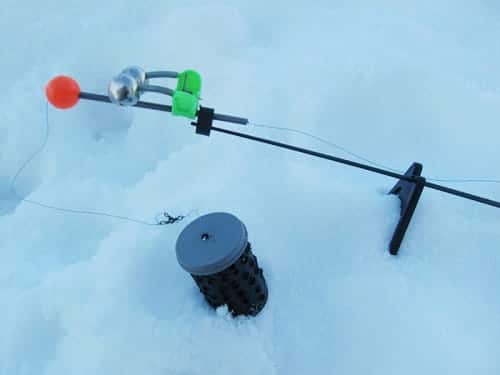
The under-ice version of the feeder, which is also called the winter donka, is very effective when fishing on the river, but is often used in standing reservoirs. Its high efficiency is due to the regular delivery of a small amount of feed to the bottom. An appetizing trail of plant and animal particles is created in the water, which quickly attracts the attention of the bream.
This tackle consists of several elements:
• a short rod with a soft, brightly colored tip; • inertia-free or multiplier reel; • main monofilament with a diameter of 0.16 mm; • feeders weighing from 10 to 30 g; • a leash made of high-quality fishing line with a thickness of 0.12–0.14 mm; • hook No. 16–10.
The sensitive tip of the rod (quivertip) makes it possible to see even cautious bites. The reel allows you to quickly lower the equipment to the bottom and is very helpful when fishing for large specimens. The weight of the feeder is selected taking into account the depth at the fishing site and the strength of the current. The leash length is usually 70–100 cm.
Fishing rod with a nod under the jig
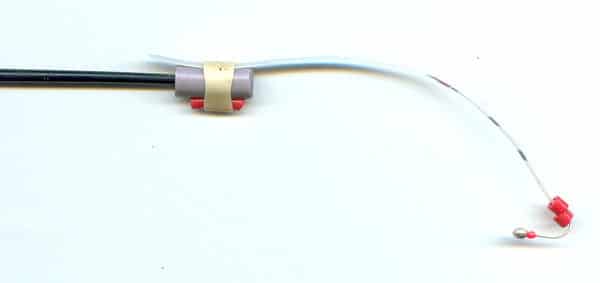
Many bream fishermen prefer to fish with jig tackle, which includes: • a balalaika-type fishing rod; • long nod made of elastic material; • fishing line with a diameter of 0.1–0.12 mm; • jig. Fishing can be carried out either with a bait lying motionless on the bottom, or with a “game”.
Rocker
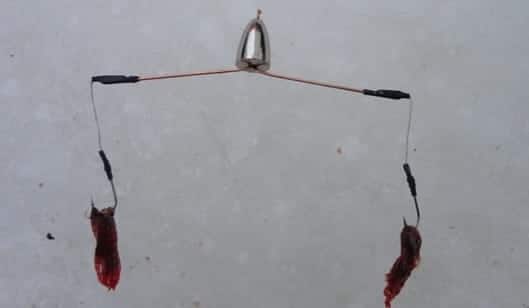
An equipment called a “yoke” has proven itself to be excellent during periods of high fish activity. It is more often used when fishing on rivers with moderate currents. You can make it quite easily yourself. For this you will need: • stainless wire; • two dark-colored cambrics; • sinker-olive; • round nose pliers; • pliers.
The wire diameter should be about 0.5 mm. For such installation, it is better to choose black or brown cambrics, as they will be less alarming to the bream. The weight of the sinker is usually about 8 g. The manufacturing process is as follows:
1. Using pliers, a small loop is formed in the center of a 13 cm long piece of wire; 2. cambrics are placed on both sides of the structure; 3. small loops are made at the ends of the wire piece; 4. the cambrics move close to the formed ears; 5. A longitudinal cut is made on the olive sinker to the central hole; 6. a wire structure is inserted into the cut (strictly in the center); 7. The load is clamped with pliers.
The main monofilament line with a thickness of 0.16 mm is tied to the central loop. 2 dark braided leashes with a diameter of 0.12 mm are attached to the side ears. Their length should be 3–5 cm. This equipment usually uses hooks No. 12–8. The rod used is equipped with a rigid spring nod.
Jigs and nodding rod
For fishing with jigs, a fishing rod called “balalaika” is most often used. It is equipped with a built-in reel, which allows you to quickly change the fishing depth. The good ergonomics of this model allows for high-quality bait play. The optimal length of the whip is about 15 cm. To give the jig the necessary animation, the fishing rod is equipped with a lavsan nod about 12 cm long. Using this element, the bait can be provided with a smooth game, which bream really likes. This part also serves as a bite alarm.
At the beginning and middle of the season, jig models are usually used, which are used in combination with a nozzle. These include:
• “pellet”; • “Uralka”; • “ovinka”; • "a drop".
On the last ice, when the fish begins to actively move through the reservoir, stable results are shown by nozzle-free jig options:
• “devil”; • “goat”; • "cobra". Fishing without bait involves active play with bait. The color and size of the models used are selected experimentally.
Fishing tactics
Fishing tactics must be chosen based on the conditions and capabilities of the fisherman. If you have an echo sounder, then concentrations of bream can be detected with its help. The task is even more simplified if the reservoir is familiar and the fish sites are approximately known.
The first rule for successful bream fishing is silence. No throwing the box onto the ice, running around, loud conversations or other noise. Bream is a very careful fish. This is especially critical if the ice is thin and the depths are relatively shallow.
An injured flock may not come back. That is why the best catches occur either in the early morning, still at dusk, or in the evening and at night, when the noise on the ice subsides.
If there is no echo sounder, but the probable parking location is approximately known, you need to make several paired holes (there should be 0.5-1 m between them) at a distance of 10-20 meters from each other over different terrain and depths. Paired holes will subsequently make it possible not to drill through the ice and not to frighten the fish in the presence of bites and the installation of additional gear.
It is better to darken the holes with snow, or at least leave the crumbs in the hole by making a hole in it with a stick. Then the holes need to be fed with one or two feeders each. During the current, the feeders should be opened directly above the bottom, in standing water at a distance of 1-1.5 meters.
In calm water and depths of up to 4 meters, you can feed directly into the hole. After 15-20 minutes, you can check the fed holes and notice where bites occur more often or even exist. In these holes you can additionally feed with one feeder. The situation becomes more complicated if the fish are inactive.
In the dead of winter, bream can bite in short periods with long pauses. In this case, you can only wait for the next exit if you are sure of the fishing spot. In general, catching bream in winter is rarely based on constantly searching for fish. Where it is, it is easier to find your “key” to the fish than to find active individuals.
When fishing for bream, you need to have different baits, as it can be very capricious. Two or three fishing rods will help you determine the best bait for today and then concentrate only on it.
Up
Fishing weather
The main condition for successful fishing is stable weather. The fish simply need to have time to adapt to constantly changing conditions. If the atmospheric pressure remains the same for two or three days and the wind blows in the same direction, then you can safely go after bream. Precipitation, cloudiness and even wind direction are all secondary and act unpredictably.
It happens that the weather turned out to be simply fabulous. On a winter day it is warm, the sun is shining and even a little warm, and there is no wind at all. In such weather it is comfortable for fishermen, but not for bream. Personally, I have never successfully caught them on such days.
A suitable atmospheric pressure for bream is considered to be in the range of 735-745 mm.
This is good, but it is still more important that the value stays for several days and does not jump. Even if going beyond these limits. You can safely go for bream when large, not heavy snow falls. There should be no gusts of wind, and cloudiness remains throughout the day. Roach, which often coexists with bream, also loves this weather.
We recommend reading: Amur black bream
